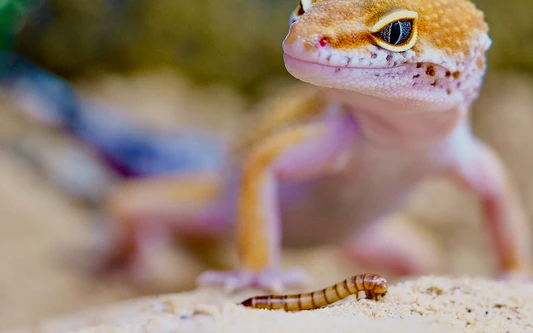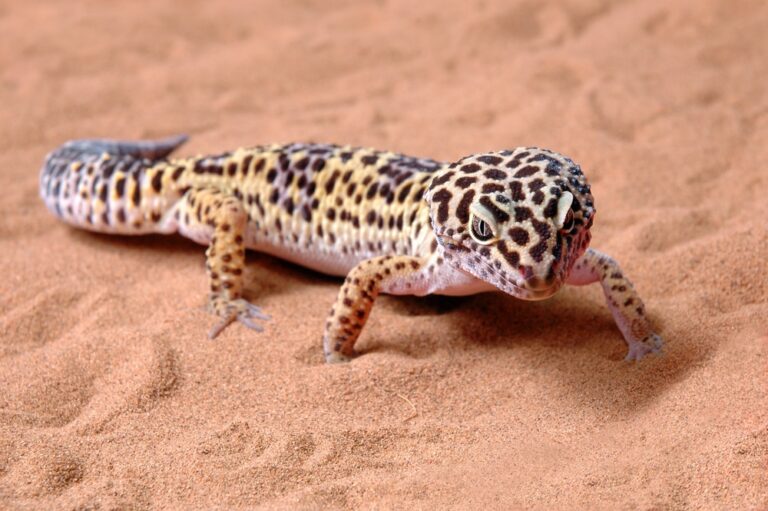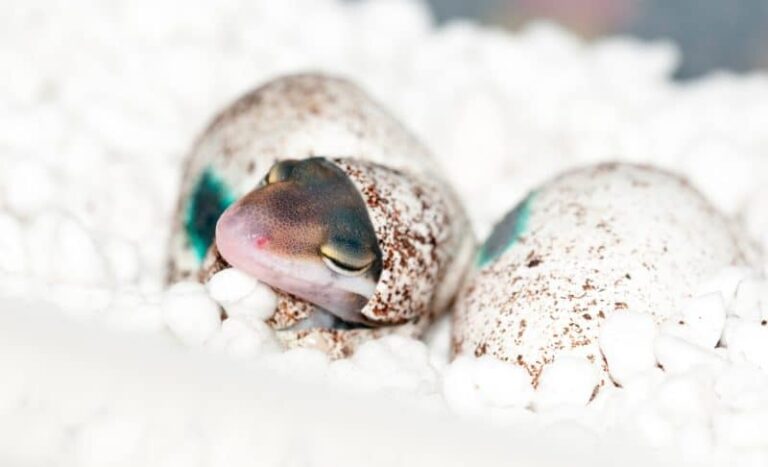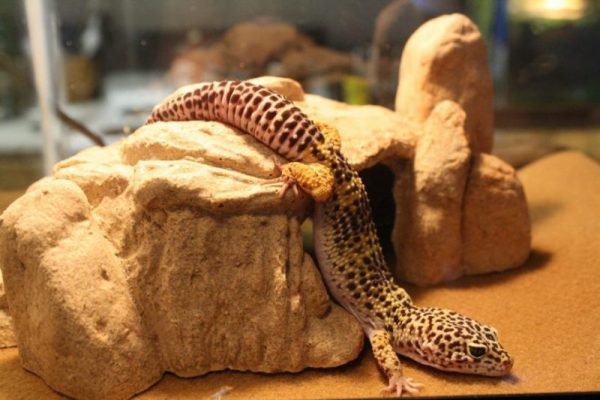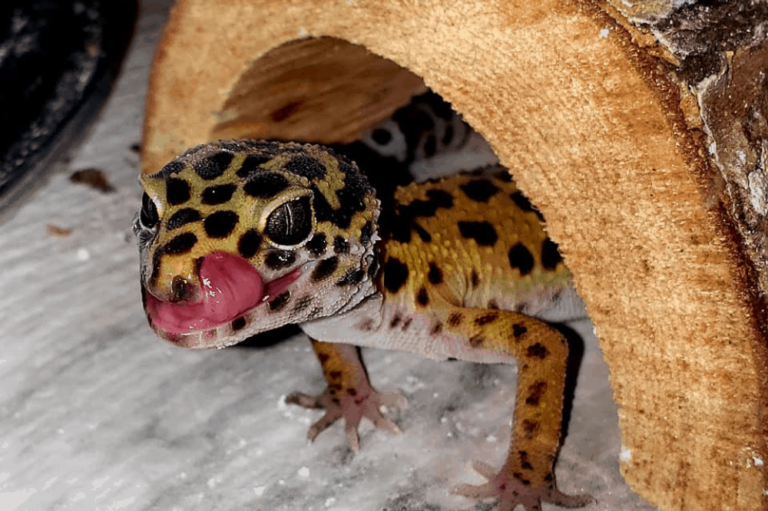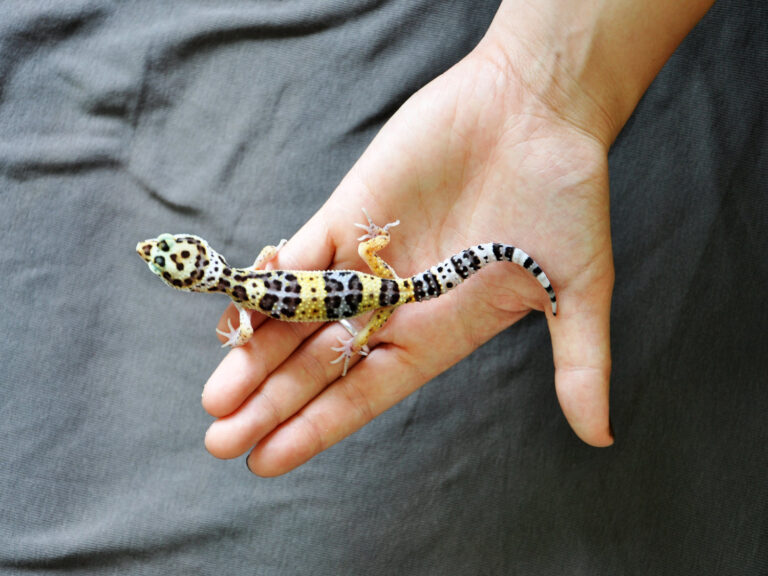Why Does My Leopard Gecko Stare at Me? Unlocking the Enigmatic Gaze
As a passionate reptile enthusiast, I’ve often found myself captivated by the curious and enigmatic behavior of these remarkable reptiles. If you’ve ever owned one of these endearing creatures, you might have noticed a peculiar habit: the piercing stare of your leopard gecko, an intense gaze that seems to hold a secret message.
However, they have some interesting habits. They might stare to stay safe, as they don’t have eyelids and always keep an eye out for potential threats. Sometimes, they’re just watching their surroundings out of curiosity. They may even give you a look when they want something, like food or attention.
And if they’re new to their home or unsure about you, they might not trust you right away. So, don’t worry if your gecko’s behavior seems a bit puzzling – it’s all part of their unique charm.
Join me on this captivating journey as we uncover the fascinating reasons behind this behavior and gain valuable insights into the minds of our reptilian companions.
Why Does My Leopard Gecko Stare At Me: Top Reason
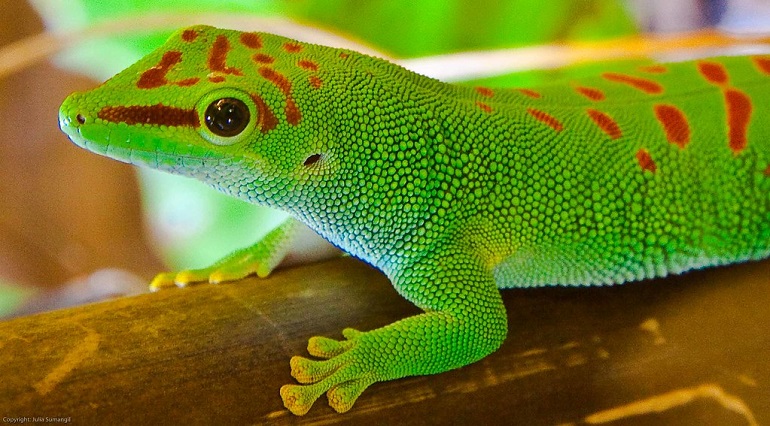
Vigilance against Perceived Threats:
Geckos are naturally inclined to stare as a means of safeguarding themselves against potential threats. Whether they occupy the role of predator or prey in their ecosystem, their innate instinct is to remain vigilant when introduced to unfamiliar environments.
Consider your own experiences in unfamiliar places; you likely felt a sense of apprehension and caution in unfamiliar surroundings. Similarly, they when inhabiting the wild, engage in intense scrutiny of their surroundings, primarily to detect potential predators. Once they discern that the movements they observe pose a threat, they swiftly strategize their next move, often opting to flee to a safer haven.
In the context of being kept as pets, they may view their human caregivers (who often move about) as potential threats. Thus, if it appears watchful of your activities, it signifies their preservation of the survival instinct.
Absence of Eyelids:
Further, while the notion may initially appear implausible, it’s worth acknowledging that some gecko species, such as crested geckos, lack eyelids altogether. This absence of eyelids can contribute to the impression that they are in a constant state of staring.
Consider crested geckos, for instance, which perpetually maintain open eyes due to their eyelid deficiency. As they cannot close their eyes conventionally, they employ a transparent scale to keep their eyes moist.
So, this unique adaptation often leads them to seem as though they are perpetually staring. Moreover, it’s important to note that what may appear as a gaze could simply be a moment of rest or even sleep, characterized by drooping crests and fine-line pupils.
Predatory Focus:
Also, as predators themselves, adopt a distinct form of fixation before pouncing on their prey—a phenomenon colloquially referred to as the “bug stare.” Observing this behavior during feeding can provide valuable insights.
In the case of crested geckos, their eyes undergo a noticeable transformation. Their pupils dilate, and the crests above their eyes elevate, sometimes revealing a white ring. These visual cues signify their readiness to pounce on their intended prey at any given moment.
Reflection Fascination:
Like many creatures in the animal kingdom, they may stare at their own reflection without recognizing themselves, a behavior often observed in reptiles. This fascination with reflections can create the illusion of prolonged staring.
While humans possess the capacity to recognize themselves in mirrors, they typically lack this self-awareness. Consequently, their curiosity in their own reflections can make it appear as if they are fixated on something beyond the reflective surface.
Enigma Syndrome and Unusual Behaviors:
In certain instances, prolonged staring in them can be indicative of a condition known as Enigma Syndrome (ES), a mysterious ailment that warrants professional veterinary evaluation. ES may manifest alongside peculiar behaviors, including death rolling, head tilting, unconventional resting positions, loss of interest in food, circular walking, and “stargazing,” where they gaze upward for extended periods before resuming normal activity.
Observational Curiosity:
Geckos are naturally curious beings and tend to focus on moving objects within their vicinity. This curiosity extends to their human caretakers, who often engage in various movements within their line of sight.
Given their penchant for vigilance and their inherently cautious nature, they may closely observe human activities to assess any potential threats. This heightened vigilance is particularly evident during mealtime, when their attention may be fixated on live prey, contrasting with their disinterest in motionless food items.
Requesting Attention:
Geckos may stare at their owners as a form of communication, signaling various needs such as food, treats, or companionship. This behavior can be likened to Pavlovian conditioning, where they associate their owner’s presence with the expectation of being fed.
Over time, they with a strong bond with their caregivers may adopt the habit of staring as a non-verbal plea for sustenance. They come to perceive their owners as the source of nourishment, leading to this behavior.
Territorial Protection:
Territoriality is not uncommon among them, particularly among males. Even in spacious enclosures equipped with ample hiding places, territorial instincts persist. When confronted with intruders, such as new or live prey, it may employ prolonged staring as a means of evaluating the situation and safeguarding its territory.
To prevent territorial conflicts that may result in harm to your pet, it is advisable to house them individually, minimizing encounters with potential trespassers.
Trust Issues and New Relationships:
Trust in the context of geckos, particularly for newly acquired reptiles, is a complex matter. As well as they do not possess the same social instincts as humans, making trust-building a gradual and nuanced process.
In the initial stages of ownership, they may perceive their owners as potential threats due to their limited familiarity. Trust must be cultivated over time through patient and respectful interactions. Understanding that they do not possess human-like trust mechanisms is crucial in establishing a harmonious relationship with these creatures.
Deciphering Leopard Gecko Behavior and Body Language
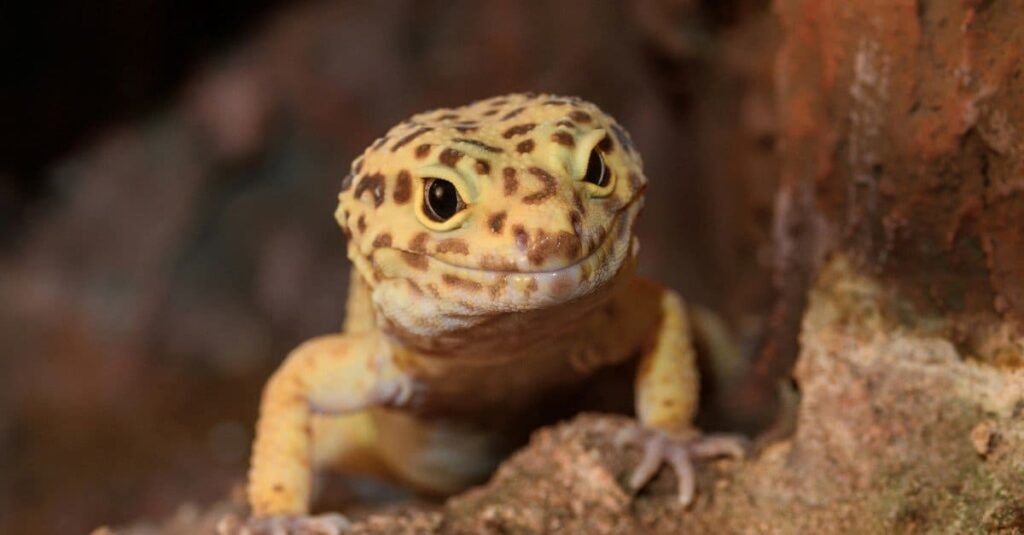
Tongue Flicking: Leopard geckos use tongue flicking to explore and smell their surroundings. It’s like their way of checking out the environment.
Tail Shaking and Wiggling: Further, communicate with their tails. Slow wiggles mean they’re saying hello, while fast shakes might mean they’re nervous or annoyed.
Chirping and Squeaking Sounds: Sometimes geckos make noises when they’re scared. It’s their way of trying to scare away potential threats. But if they make these sounds for no reason, it could be a sign of trouble.
Hiding: they are most active at night, so it’s normal for them to hide during the day. But if they hide all the time, it could mean they’re too cold or stressed.
Tank Climbing: Also, might climb the walls of their tank, which is usually okay. But if they keep trying to escape, it could be because their home isn’t right for them or they’re not getting along with other geckos in there.
When Your Gecko Doesn’t Stare: Embrace Their Unique Personality
If it isn’t inclined to engage in the common behavior of staring, there’s absolutely no need for concern. Just like people, these reptilian companions possess distinct personalities and behaviors, and not all of them conform to the same patterns.
What might be considered standard behavior for one gecko could indeed be a deviation from the norm for another. Your gecko’s “normal” is entirely their own, and that’s perfectly fine.
The crucial point to remember is that the absence of staring doesn’t signify a problem. What truly matters is the overall well-being of your pet. As long as you provide them with a clean, suitable habitat, a reliable source of nourishment, optimal temperature conditions, and opportunities for mental and physical engagement, is thriving
Fostering Trust and Comfort with Your Gecko
Building a strong bond with your leopard gecko involves handling them regularly, but it’s crucial to strike the right balance. Avoid excessive handling and instead, do so at intervals that align with your pet’s comfort level.
Furthermore, spending time in close proximity helps them acclimate to your presence. Consider working in the same room as your pet, allowing them to become accustomed to your company.
Maintaining a calm and composed demeanor when you’re around your reptile is paramount. This approach ensures that your buddy remains at ease and doesn’t become anxious in your presence. By cultivating a harmonious environment, you strengthen the trust and connection between you and your furry.
FAQs
Why is my leopard gecko just staring?
Leopard geckos often stare to observe their environment, identify potential threats, or communicate needs.
How do you know if a leopard gecko loves you?
Leopard geckos may not feel emotions like humans, but trust and comfort are built through gentle handling and care.
Why does my leopard gecko look at me with one eye open?
Geckos sometimes close one eye to rest or due to bright lights, but it’s generally not a cause for concern.
Does my leopard gecko recognize me?
Yes, While they may not recognize individuals, they can associate caregivers with food and care.
Do leopard geckos want attention?
No, Leopard geckos don’t seek attention like dogs, but they may interact when they’re comfortable.
Why do geckos like their eyes?
Geckos don’t necessarily “like” their eyes but rely on their sharp vision to detect predators and prey.
Final Words
In conclusion, the world of leopard geckos is a fascinating one, filled with peculiar habits and behaviors that often leave us pondering their motives. Through my journey of understanding why my leopard gecko stares at me, I’ve come to appreciate the intricacies of their nature.
Their unblinking gaze serves as a window into their world, revealing their innate instincts to protect themselves, explore their surroundings, and communicate their needs. While some of their behaviors may seem mysterious, they add to the charm and uniqueness of these remarkable reptiles.
So, every time it fixes its unwavering gaze upon me, I now see it as a silent conversation, a connection between two beings sharing a moment in the vast tapestry of nature. It’s a reminder that even in the smallest of creatures, there’s a world of wonder waiting to be explored and understood.

